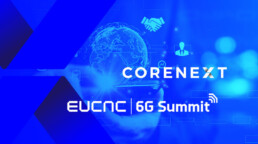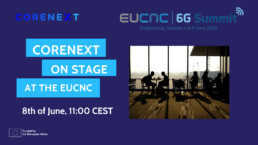Building Trust in the Dynamic XR Industry: Collaboration for End-to-End Trustworthiness
Extended reality (XR) is a catch-all term to refer to augmented reality (AR), virtual reality (VR), and mixed reality (MR). The technology is intended to combine the physical world with the "digital twin world" while being able to interact with it.
The fields of virtual reality and extended reality are rapidly growing and are being applied in a wide range of areas, such as entertainment, marketing, real estate, training, and remote work.
As this immersive technology gains traction, addressing the emerging challenges associated with trustworthiness becomes crucial. With an array of devices from various vendors flooding the market, it is imperative to create awareness among XR stakeholders about the significance of trustworthiness and establish a foundation of reliability and security. This article delves into the importance of trustworthiness in the XR industry, particularly in integrating equipment from different vendors.
Exploring the World of XR
The XR domain, which includes virtual reality (VR), augmented reality (AR), and mixed reality (MR), has experienced remarkable expansion and evolution. Progress in the development of hardware components like headsets, motion trackers, and haptic devices, combined with breakthroughs in software, have propelled XR to the forefront of groundbreaking innovation. These advancements have unlocked a multitude of captivating possibilities across various sectors, ranging from gaming and healthcare to education and industrial training.
The Need for Trustworthiness
As XR becomes increasingly present) across various industries, ensuring trustworthiness becomes essential. Trust is critical for both end-users and stakeholders within the XR ecosystem. On the one hand, for end-users, trust, reliability, security, and overall performance of XR devices translate into the quality immersive experience they seek. For XR stakeholders, trust translates into building long-term relationships with customers, safeguarding sensitive data, and maintaining a competitive edge in the market.
Challenges of Equipment Integration
One challenge that arises as the XR industry expands is the integration of equipment from different vendors. Service providers often rely on diverse devices to deliver comprehensive XR experiences tailored to specific applications. However, integrating devices from multiple vendors can introduce compatibility issues, interoperability concerns, and potential security vulnerabilities.
End-to-End Trustworthiness
Ensuring end-to-end trustworthiness is essential to address the challenges associated with integrating equipment from different vendors. This involves establishing a holistic approach that focuses on the XR ecosystem's reliability, compatibility, security, and privacy aspects.
Reliability: Devices should meet industry standards, undergo rigorous testing, and provide consistent performance to instil confidence in end-users and stakeholders.
Compatibility: Establishing compatibility guidelines and standards that enable seamless integration of devices from different vendors is crucial. This ensures interoperability and reduces potential issues from mixed hardware and software environments.
Security: XR devices must incorporate robust security measures to protect against unauthorized access, data breaches, and other cyber threats. Encryption, authentication protocols, and secure software development practices should be employed throughout the XR ecosystem.
Privacy: With XR technology capturing and processing vast amounts of user data, protecting privacy is paramount. Stakeholders must adopt transparent data handling practices, provide clear consent mechanisms, and stick to relevant data protection regulations.
Collaboration and Standards
Collaboration among XR stakeholders, including device manufacturers, software developers, service providers, and regulatory bodies, is crucial for establishing trustworthiness. Joint efforts should focus on defining and implementing industry standards that enclose device specifications, software interfaces, security protocols, and privacy guidelines. Open dialogue, knowledge sharing, and cooperation among stakeholders will ensure the development of a robust and trustworthy XR ecosystem.
Education and Awareness
Creating awareness among XR stakeholders is vital for building trustworthiness. Training programs, workshops, and industry events should emphasize the importance of trustworthiness and provide practical insights into integrating devices from different vendors. Encouraging responsible development practices, conducting regular security audits, and staying updated with emerging threats is essential when promoting a culture of trust within the XR industry.
As the XR industry grows, integrating devices from different vendors becomes increasingly prevalent. Trustworthiness is key in ensuring a secure and reliable XR experience for end users. By focusing on end-to-end trustworthiness, collaborating on industry standards, and promoting awareness among stakeholders, the XR industry can grow with confidence, safeguarding user interests and capitalizing on the vast potential of this transformative technology. It will be one of the COREnext use cases.
RESOURCES:
What is the Extended Reality (XR): Complete guide 2023
5 Problems And Solutions Of Adopting Extended Reality Technologies Like VR And AR
Secure and Trustworthy Artificial Intelligence-Extended Reality (AI-XR) for Metaverses
The COREnext Project Takes the Spotlight at EuCNC
This year's EuCNC event holds immense significance as it provides a platform to showcase the visions and early technological advancements in the field of 6G. Following the launch of several regional 6G initiatives, it is gratifying to witness Europe's leading position in mobile communications research, thanks to the Smart Networks and Services (SNS) joint undertaking.
Led jointly by industry and the European Commission, the SNS has formulated the strategy and provided the necessary tools to foster technological capabilities for 6G systems. The SNS has recently initiated 35 projects with a combined funding of approximately EUR 250 million from the European Union. Moreover, this year, there is an anticipated call for project proposals with a budget of EUR 132 million. These efforts encompass the establishment of experimental infrastructures, large-scale trials, and pilots across various industries.
The COREnext project took the stage during the session. It showcased how 6G is envisioned to revolutionize the consumer and enterprise markets, surpassing the achievements of 5G. The key focus was earning users' trust and fostering innovative design to facilitate this evolutionary leap. The session presented various enabling technologies from both a network and device standpoint.
Hosted by Ericsson, a special session took place on the 8th of June at 11:00 CEST. Attendees had the opportunity to gain insights into the future of telecommunications and the role of trust in shaping the 6G landscape.
Several compelling presentations were made during the session, shedding light on various aspects of trustworthiness and innovation in telecommunications. Here's a recap of the topics covered by each speaker:
From Ericsson (SE), Fredrik Tillman started the session by providing an insightful introduction. He set the stage for the subsequent presentations, emphasizing the importance of trust and security technologies in the evolving telecom landscape.
Patrik Ekdahl, also from Ericsson (SE), delved into the telecommunications industry's challenges in implementing secure enclaves. He discussed the significance of protecting sensitive data and ensuring the privacy and integrity of telecommunication networks.
Gerhard Fettweis from Technische Universität Dresden (DE) presented the COREnext project, focusing on the design aspects that enhance trustworthiness. This project aimed to develop innovative solutions and frameworks to establish trust in the rapidly advancing telecom ecosystem.
Anastasia Grebenyuk, another Ericsson (SE) speaker, delved into radio fingerprinting. She highlighted how machine learning algorithms could be leveraged to identify and authenticate radio signals, contributing to telecommunications networks' overall trustworthiness and security.
Panagiotis Demestichas, from WINGS (GR), provided insights into the intersection of trustworthiness and IoT devices. He discussed the challenges and opportunities in ensuring the security and reliability of IoT devices, which play a crucial role in the evolving telecom landscape.
Mario Scillia (BE), from the European Commission, delivered the concluding remarks, summarizing the key takeaways from the session. He highlighted the importance of trust in driving innovation and progress in the telecommunications industry and acknowledged the significant efforts made by the presenters and participants.
The session provided a comprehensive overview of the challenges and advancements in establishing trust in the telecom sector. The presentations provided valuable insights for the attendees, contributing to the overall knowledge exchange and collaboration within the community.
https://youtu.be/LMa0lWwSSFk
Learn more about the project and the chair at the Ericsson session during the EuCNC.
https://youtu.be/scmtEON2f1w
COREnext at the EuCNC
The European Conference on Networks and Communications (EuCNC) and the 6G Summit is set to host a special session on 6G Security and Trust, where the recently launched COREnext project will be on stage. 6G is envisaged to impact the consumer and enterprise markets beyond what is accomplished by 5G today. For this evolution to happen, trust must be earned among users and supported by innovative design. This session will present examples of enabling technologies from a network and device perspective.
The special session, hosted by Ericsson will take place on the 8th of June, at 11:00 CEST.
Programme
- Introduction (5’):
- Fredrik Tillman (Ericsson, SE)
- Secure enclave challenges for telco (15’+5’ Q&A)
- Patrik Ekdahl (Ericsson, SE)
- The COREnext project- enhanced trustworthiness by design (15’+3’ Q&A)
- Gerhard Fettweis (TU Dresden, DE)
- Radio fingerprint using ML algorithms (15’+5’ Q&A)
- Anastasia Grebenyuk (Ericsson, SE)
- Trustworthiness and IoT devices (15’+5’ Q&A)
- Panagiotis Demestichas (WINGS, GR)
- Concluding remarks by the commission (5’)
- Mario Scilia (EC, BE)
For more information: Special Session 11 - EuCNC



